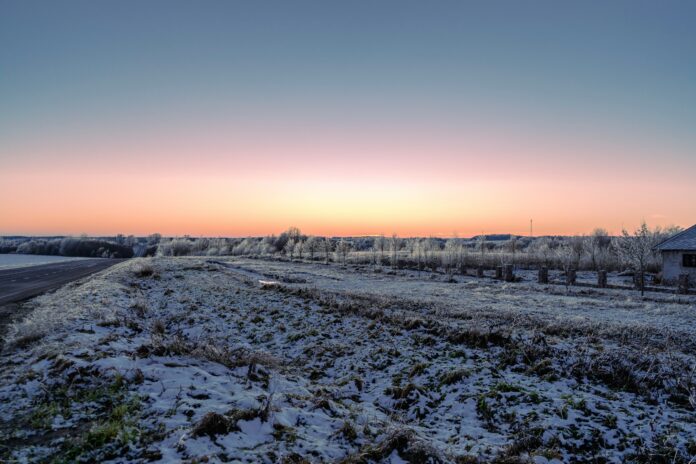For some, this day is eagerly anticipated as the most awaited day of the year.
Tuesday marks the first day of spring, although the exact moment of the vernal equinox won’t occur until later in the evening. As the sun dances across the celestial stage, marking the grand entrance of spring in the northern hemisphere, an enchanting moment awaits precisely at 11:06 a.m. EDT on Tuesday. It’s the equinox, a cosmic spectacle that heralds the rebirth of nature, where day and night embrace in perfect equilibrium, painting the sky with hues of hope and renewal.
While in areas like Washington, D.C., and its famous cherry blossom trees, it may feel like spring, the biting cold in the eastern and southern U.S. is having an impact on how it feels there.
What is the Vernal Equinox?
As Earth orbits around the Sun, it tilts at an angle. For most of the year, either the hemisphere of Earth is tilted toward the Sun or away from it.
On Tuesday, a celestial dance unfolds, marking one of two extraordinary moments in the annual calendar. Much like its autumnal counterpart in September, this day holds a rare equilibrium, where Earth’s axis leans neither toward the blazing Sun nor away from it. As a result, a harmonious balance emerges, gifting nearly every corner of our planet with approximately 12 hours of radiant daylight and 12 hours of tranquil darkness.
So, it’s a “balanced night,” from which the term equinox derives: two Latin words, aequus (equal) and nox (night). From June until the summer solstice, for the next three months, each day the Sun will rise higher in the sky – and the duration of daylight will grow longer.
It’s only on two days each year when nearly every place on Earth – barring the poles – experiences sunrise to the east and sunset to the west.
Meteorologists, who define seasons in different ways, say that spring begins on March 1st.
For people below the southern hemisphere, this Tuesday is the autumnal equinox, marking the first day of autumn.
Peak Bloom in D.C.
One of the surest signs of spring in the nation’s capital is the arrival of blossoms on the cherry trees around the Tidal Basin. And on Sunday, the National Park Service announced that the blooms had reached peak.
“Bloom! Bloom! Bloom! Did we say bloom?” the NPS exclaimed on Twitter, “The flowers are blooming and presenting a spectacular sight of spring.”
The Capital Weather Gang reported on Sunday that it’s tied for the second-earliest peak bloom on record, saying that only on March 15, 1990, had it arrived faster since records began in 1921.
The Last Gasps of Winter?
After weeks of mild weather, could Tuesday usher in the last gasps of the wintry chill for much of the eastern U.S. for the 2023-24 season? The Weather Service said that Tuesday morning could see temperatures dip below freezing in most parts of the Deep South, issuing frost advisories for at least 24 million people from Texas to North Carolina.
In Jackson, Mississippi, the Weather Service said, “The growing season has begun, and the cold could harm sensitive vegetation significantly.”
In the bustling city of Atlanta, a chilling message from the Weather Service echoes through the streets, cautioning residents about the impending threat of frosty temperatures. With an ominous tone, they forewarn of the icy grip that could wreak havoc on crops, and delicate plants, and even leave outdoor pipelines vulnerable to harm. It’s a stark reminder to brace for the cold’s relentless assault on nature’s fragile beauty.
AccuWeather said that farther north, temperatures will drop by single digits in the Upper Midwest and northern tiers of the Northeast.
For D.C.’s cherry trees, “While Tuesday morning may approach freezing temperatures, it’s unlikely to stay cold enough for long to have adverse effects on the blooms,” said AccuWeather meteorologist Ryan Adamson.”
- Travel Experts Rank the Top Packing Cubes for Seamless Adventures

- New Study Finds Intensive Weekend Workouts Key to Shedding Belly Fat

- What exactly is Dropshipping? A Deep Dive into the E-commerce Phenomenon

- Optimizing Supply Chain Management with Predictive Analytics: A Game-Changer for Businesses

- OpenAI Introduces Groundbreaking Audio Feature: Text-to-Speech Capability Mirrors Human Voices




